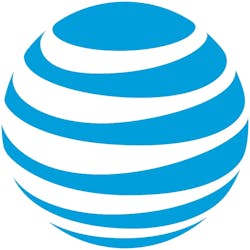DALLAS, Oct. 5, 2016 /PRNewswire/ -- AT&T* is working with technology leaders to show how new LTE-M[1] technology will bring the Internet of Things (IoT) to a new generation of devices and markets.
AT&T plans to pilot the LTE-M network in the San Francisco market starting in November. We will launch the technology across our commercial LTE network in 2017.
LTE-M technology will connect a wide variety of IoT solutions such as smart utility meters, asset monitoring, vending machines, alarm systems, fleet, heavy equipment, mHealth and wearables.
Key features expected from LTE-M are:
- Lower costs for modules that connect IoT devices to the LTE network.
- Longer battery life; up to 10 years for certain enabled IoT devices.
- Better coverage for IoT devices underground and deep inside buildings.
"We have pulled together players from across the ecosystem to pilot solutions for a myriad of industries and applications," saidChris Penrose, senior vice president, Internet of Things Solutions, AT&T. "LTE-M will provide a unique combination of enhanced coverage and longer battery life with carrier-grade security. It's part of our strategy to offer the widest range of IoT network options to our customers."
Participants in the pilot will include:
- Badger Meter – analyze how the LTE-M network, which is dedicated to supporting the IoT, may be used to enhance communications for smart water devices.
- CalAmp – explore how the LTE-M network can help companies more efficiently manage their connected vehicles and assets.
- Capstone Metering – demonstrate how LTE-M can improve Smart Cities sensor technologies. It will look to increase battery life and improve connectivity and sensor monitoring for underground smart water meters.
- PepsiCo -- examine and test ways that sensors can improve the in-store experience with smart vending solutions for the thousands of PepsiCo products consumers love and enjoy.
- Samsung – evaluate an LTE-M-based solution to enhance performance for consumer solutions. This may include wearables or other consumer devices.
The pilot will also include solutions from a robust contingent of technology providers: Altair, Ericsson, Qualcomm Technologies Inc., Sierra Wireless, u-blox, Wistron NeWeb Corp. (WNC), and Xirgo Technologies.
Learn more in our white paper, "What you need to know about IoT wide area networks." This is the third in a series of white papers designed to help businesses and developers navigate the key questions and challenges in implementing IoT solutions. For more information about AT&T IoT services and support, go to www.att.com/iot.
*AT&T products and services are provided or offered by subsidiaries and affiliates of AT&T Inc. under the AT&T brand and not by AT&T Inc.





